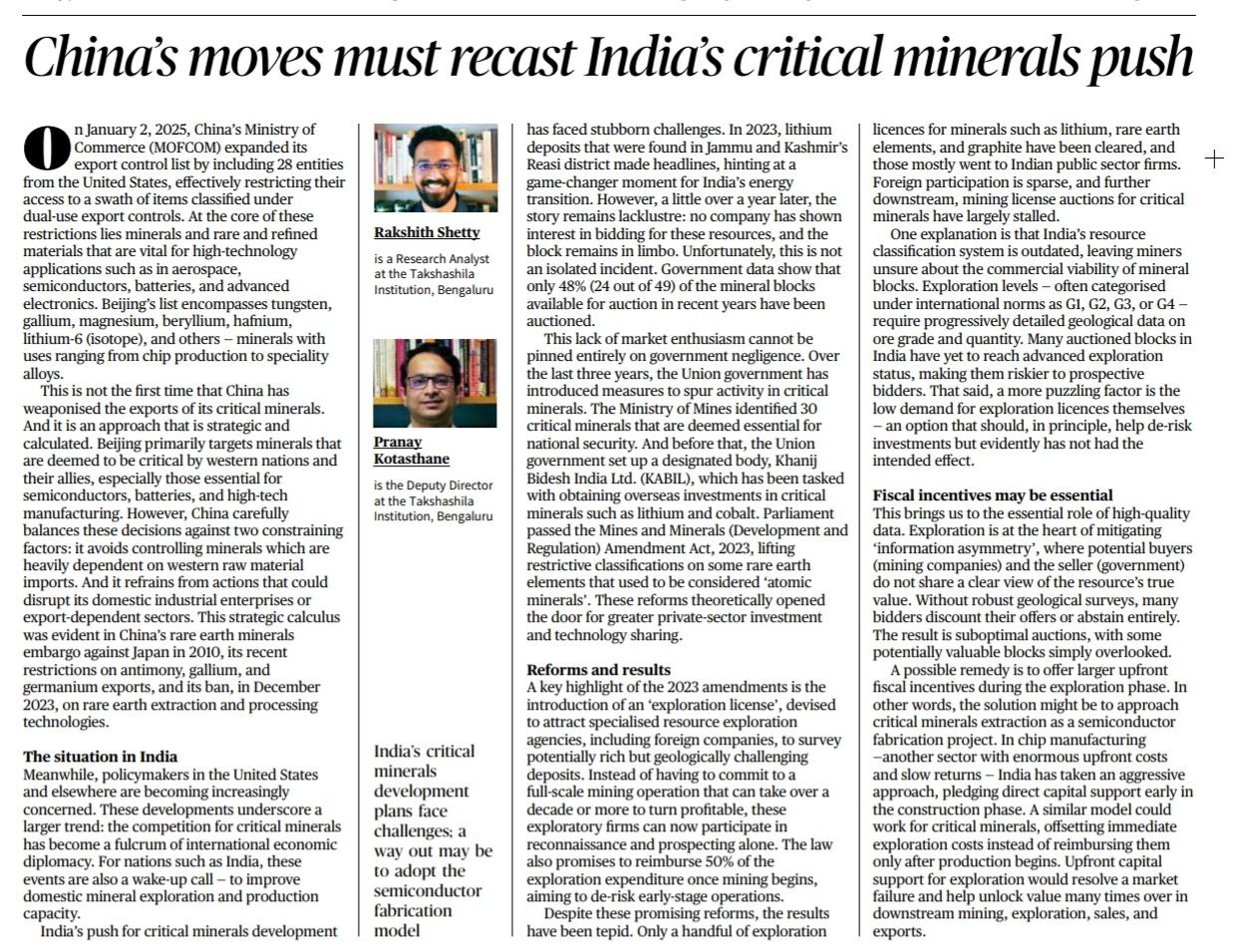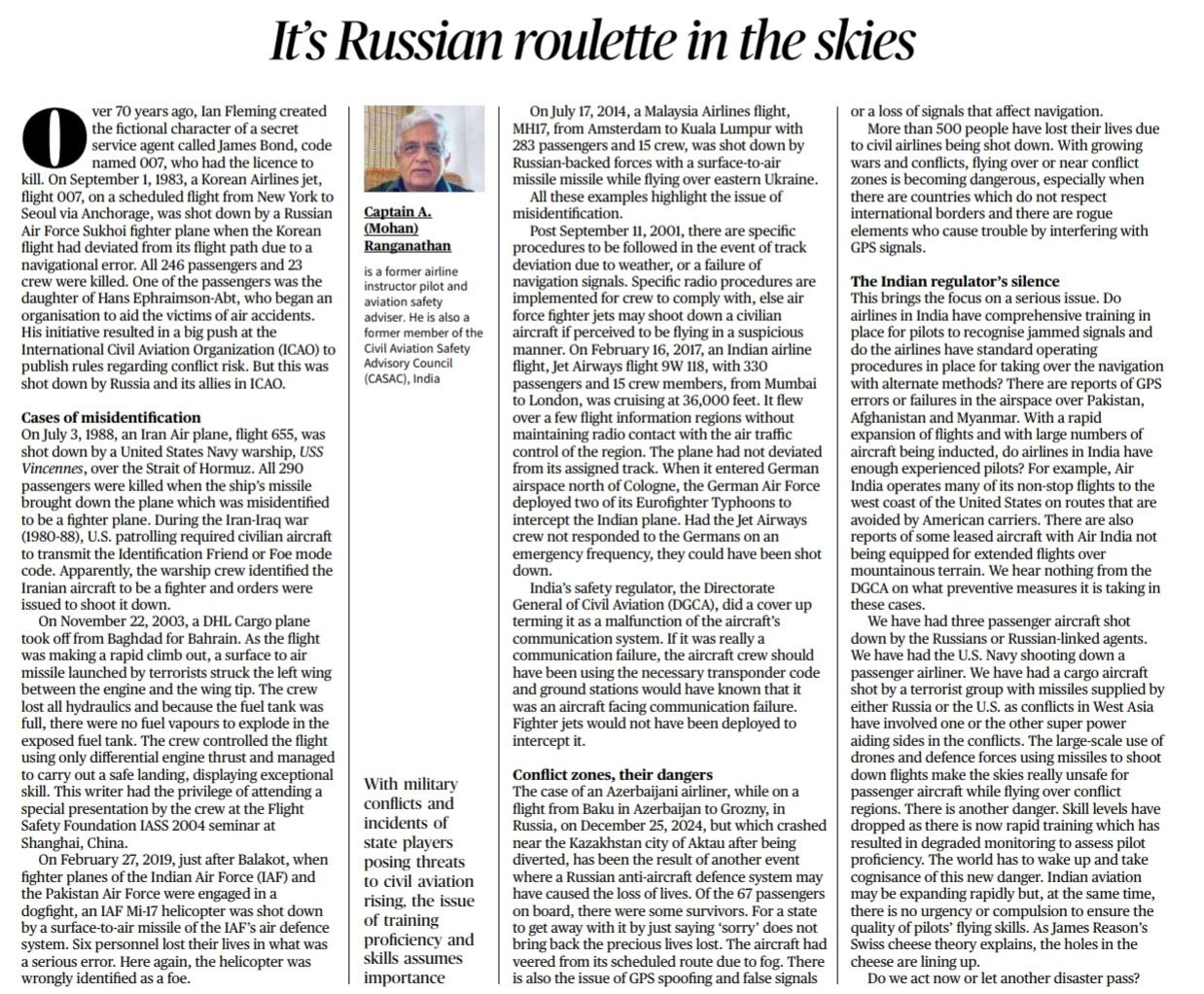1. India’s Critical Minerals Strategy: Challenges and Way Forward
Introduction
- Critical minerals, like lithium, tungsten, and beryllium, are essential for high-tech industries such as aerospace, semiconductors, and renewable energy.
- China’s export restrictions on these minerals highlight the strategic importance of securing reliable sources to fuel technological and economic growth.
- The article underscores India’s lag in exploration, extraction, and utilization of critical minerals amidst the global geopolitical scramble for resource security.
- Strategic Role of Critical Minerals
- Critical minerals are pivotal for manufacturing semiconductors, batteries, and advanced electronics.
- China dominates the supply chain, weaponizing its mineral exports for geopolitical leverage, as seen in its restrictions on rare-earth and other minerals in recent years.
- Challenges in India’s Critical Minerals Push
- Policy and Regulatory Hurdles:
- India’s outdated resource classification system creates confusion and inhibits effective exploration.
- Licensing for mineral exploration is plagued by inefficiency, deterring both domestic and foreign investments.
- Market Gaps:
- A lack of advanced geological surveys leaves potential bidders with insufficient data, discouraging investments.
- Auctioned blocks fail to reach commercial viability, slowing down development.
- Efforts to Address the Issue
- Policy Interventions:
- Introduction of reforms like the 2023 Mines and Minerals (Development and Regulation) Amendment Act, enabling private investments.
- Initiatives like KABIL (Khanij Bidesh India Limited) to secure critical minerals from international sources.
- Exploration Incentives:
- Financial support and a push for pre-auction geological surveys to mitigate investment risks.
- Need for a Robust Domestic Ecosystem
- Promoting local mining capabilities to reduce dependence on imports.
- Developing a semiconductor manufacturing ecosystem as a parallel priority to critical minerals exploration.
Conclusion
India must urgently revamp its policies and enhance institutional frameworks to secure its supply of critical minerals. This includes adopting fiscal incentives, advancing exploration technologies, and fostering private-public partnerships. A robust domestic strategy, combined with international collaboration, will be key to reducing dependency on China and ensuring long-term resource security.
Bottom of FormMains Practice Question |
Q. Discuss the significance of critical minerals in India’s technological and economic development. Highlight the challenges and suggest measures to strengthen India’s critical minerals strategy. |
2. Civil Aviation Safety: Navigating Risks Amid Rising Geopolitical Tensions
Introduction
- Incidents involving civilian aircraft being misidentified as military threats have led to significant loss of life, highlighting risks to civil aviation safety.
- The article underscores the growing threat to commercial aviation in conflict zones and the need for stringent safety protocols.
- Cases of Civil Aircraft Misidentification
- Historical Examples:
- Korean Airlines Flight 007 (1983): Shot down by a Russian jet, killing 269 people, due to a navigational error.
- Iran Air Flight 655 (1988): Shot down by the USS Vincennes, mistaking it for a fighter plane, with 290 fatalities.
- Malaysia Airlines Flight 17 (2014): Destroyed by a surface-to-air missile over eastern Ukraine, killing 298 passengers.
- Recent Examples:
- February 27, 2019: Indian Air Force mistakenly shot down its own helicopter during escalating tensions with Pakistan.
- Cargo flights like the DHL plane (2003) and other civilian aircraft targeted due to miscommunication or navigational errors.
- Challenges to Civil Aviation Safety
- Geopolitical Risks:
- Conflict zones and rogue states increase the risk of misidentifying civilian aircraft.
- Regions like Afghanistan, Pakistan, and Myanmar lack robust safety measures for navigating sensitive airspaces.
- Operational Weaknesses:
- Insufficient pilot training in recognizing alternative navigation systems during emergencies.
- Lack of modern equipment for flights over extended and conflict-prone zones.
- Role of Regulatory Authorities
- ICAO and DGCA:
- ICAO promotes global aviation safety standards but faces resistance from geopolitical actors.
- The Directorate General of Civil Aviation (DGCA) needs proactive measures for handling emergencies in Indian airspace.
- Preventive Steps:
- Compulsory use of transponders and identification systems for all flights.
- Better coordination between military and civilian aviation agencies.
- Importance of Skill Development
- Continuous training for pilots to adapt to navigational challenges and emergency scenarios.
- Investment in monitoring technologies and modernization of aviation safety systems.
Conclusion
The increasing threat to civil aviation safety in conflict zones demands immediate attention from global regulatory bodies and governments. Strengthening operational protocols, fostering international cooperation, and investing in pilot training and modern technology are essential to safeguard civilian lives.
Mains Practice Question |
Q. With rising geopolitical tensions, civil aviation safety faces increasing risks. Examine the challenges and suggest measures to ensure the safety of passenger flights, especially in conflict-prone zones. |



